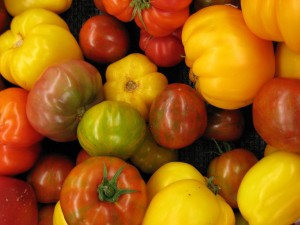It’s cooooold out there, and the frozen ground is covered with several inches of snow in the Shenandoah Valley and much of the Chesapeake Bay watershed. What a perfect time to start dreaming about local food: sweet strawberries in June, crispy cucumbers in July and tasty tomatoes in August.

Locavores – people who support their local farmers by favoring locally grown and produced food – are popping up all over the United States. In a survey released last year by the consulting firm ATKearney, 66 percent of respondents favor local food because they believe it supports local economies and 60 percent believe that local food provides a better assortment of products. Others prefer local foods as a way to reduce their carbon footprint (locally grown food doesn’t have to travel as far to get to your plate, so it uses less fossil fuel) or to choose healthier alternatives (local food typically is fresher and is picked as it ripens, not weeks beforehand). Local food means local farms, more open space, and less land covered by impervious surfaces that encourage polluted runoff. The Chesapeake Bay Foundation and the Potomac Conservancy both have recently identified urban and suburban polluted runoff from development as a growing threat to water quality.
Summer goodies might feel like a long way off right now, but spring peas, onions and leafy greens will emerge in just a couple of months. In the meantime, local meat, eggs and artisan foods are still available even as the snow flies. You can search for nearby outlets and plan for coming months with the LocalHarvest online interactive map. Just type in your zip code and indicate what you’re looking for: farmers markets, CSAs (community supported agriculture), grocery stores or restaurants that specialize in local food. So keep dreaming, but start planning. Local food is just outside your door.

